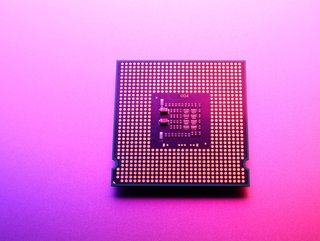The Opportunities of DSP Technology & AI in Manufacturing

DSP (Digital Signal Processing) digitises the functions that conventional analogue filters would do in the past. It involves taking real world input and then mathematically manipulating that input.
The concept of processing signals digitally took off in the 1960s. Now, the technology is being utilised in smart factories, where DSP technologies can impact factory automation, to capture and action voice commands. DSP is fundamental to ensuring the high-quality input that modern manufacturing machinery requires for voice control, where command words can trigger factory-wide processes - and stop them.
DSP can make testing and measurement across the factory floor more accurate – from increasing the range at which voice commands can be delivered, to improving the subsequent analytics from the machines that use it.
How AI can augment the capabilities of DSP solutions
XMOS is a deep tech fabless semiconductor company, on a mission to change the way systems are deployed on silicon – disrupting system-on-chip economics and time to market, by enabling embedded software engineers to create custom SoC solutions.
Aneet Chopra leads the product management and marketing team at XMOS.
“My main focus is to set and execute company strategy, drive the product roadmap and execution, and leverage creative marketing to drive XMOS awareness and lead generation,” he says.
Chopra sees that beyond its capacity to deliver new or improved features in conventional DSP, the integration of AI into such devices allows them to communicate with other devices across the factory floor and to make contextualised decisions.
“A DSP solution can take a very specific audio input, cut out all the background interruption by ‘cleaning’ the signal and then triggering an action as a result of that signal,” says Chopra. “In this way DSP can become part of the Industrial Internet of Things; the commands and information being transmitted to and from other devices, with AI helping to inform the machine of the most sensible decision to be made.”
AI isn’t just about its ability to implement effects more consistently and simply than manual equivalents. It heralds the introduction of DSP into a much wider ecosystem, which is capable of more sophisticated and nuanced inputs and outputs.
DSP technology is paving the way for the manufacturing of smart devices and applications
Combining AI and DSP has incredible potential, introducing new accessibility, safety and command features right across the factory floor. What’s paving the way for these features in 2024 is a growing recognition that a dedicated DSP-only solution is not necessarily the way to make the most of them.
“A dedicated DSP is always going to offer some performance advantages over a more general solution. It will execute its functions more efficiently, or perhaps with more precision, than a multipurpose device,” says Chopra.
But the cost of that specialism is that a ‘pure’ DSP will be inefficient at anything that isn’t DSP. Such a solution simply won’t have the components or integrations to tackle tasks outside of its intended focus, especially when it comes to AI – necessitating more complex design work to integrate the device into the overall design, and limiting its effectiveness once you do.
“Rather, manufacturers and designers will unlock the value of the intelligent IoT in opting for versatile, re-configurable chips that can accommodate DSP alongside other elements, like AI. With some solutions, you can get to market just through software programming to provide the functionality you need,” adds Chopra.
This not only solves some of the limitations around pure DSP solutions, but it also allows designers to attack many different market opportunities.
Manufacturers can’t build a new chip for every single one of those market opportunities, but DSP solutions can mean that one device is suitable for a range of applications – even when selling at low volumes. The quick development time can make smaller opportunities more viable.
******
Make sure you check out the latest edition of Manufacturing Digital and also sign up to our global conference series - Procurement & Supply Chain 2024 & Sustainability LIVE 2024
******
Manufacturing Digital is a BizClik brand.
- Exotec: Warehouse Automation & The British Alcohol IndustrySmart Manufacturing
- SAP’s AI Joule set to Transform Supply Chain ManufacturingAI & Automation
- Top Ten: Diverse Companies in ManufacturingProduction & Operations
- How Smart Factories are Reshaping the Manufacturing SectorSmart Manufacturing






